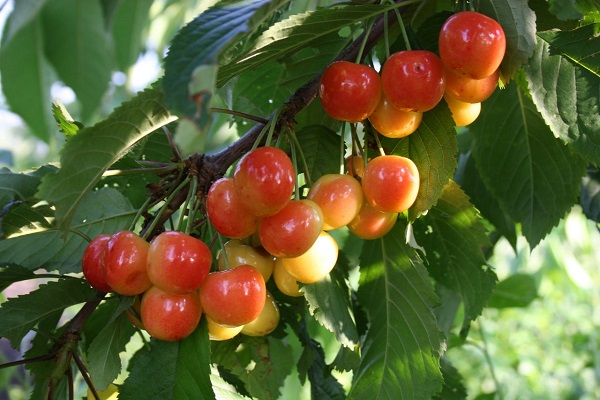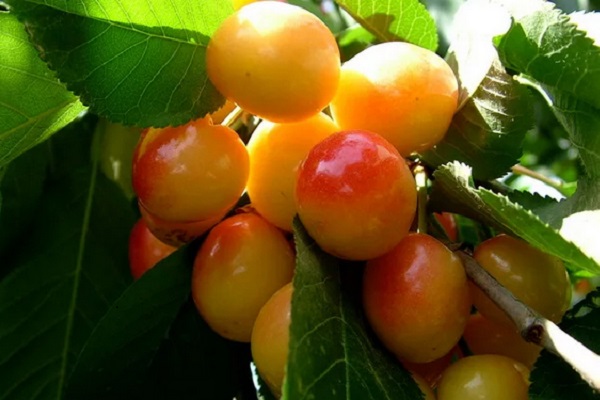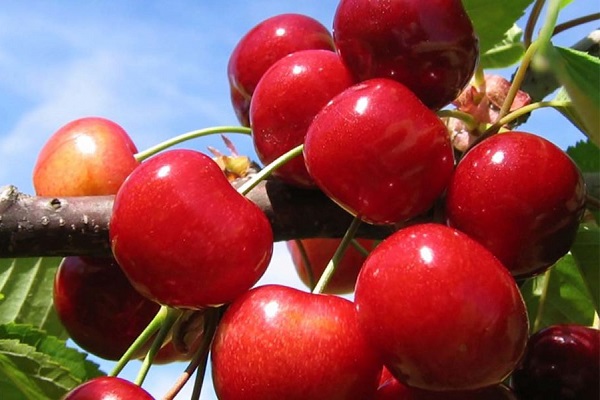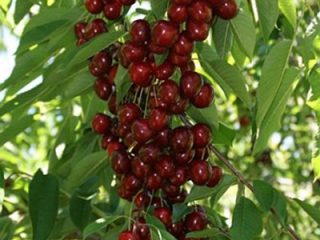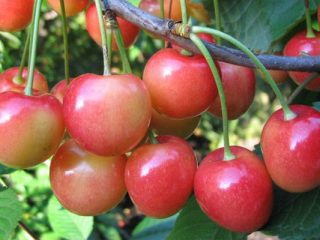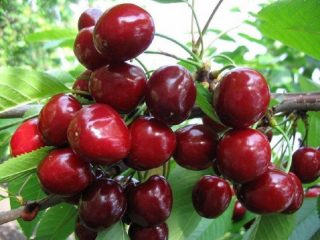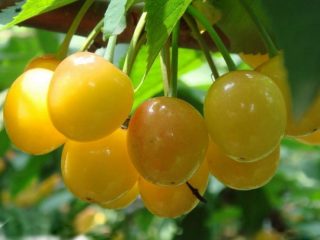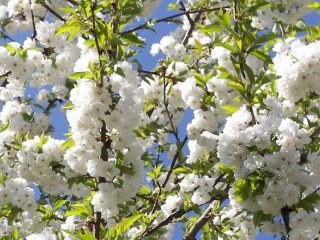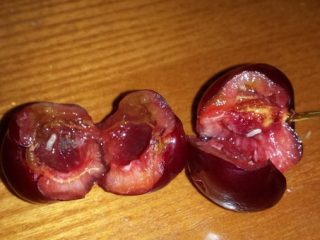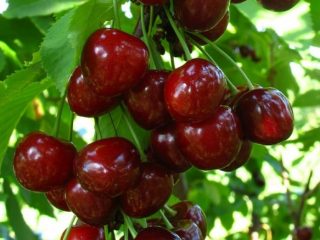Content
Cherries It is not for nothing that Franz Joseph has such an aristocratic name. This unique variety is indispensable in industry due to its huge list of positive qualities. Many gardeners recommend Franz Joseph because of its ease of care and quality of the harvest.
History of variety selection
The history of Franz Joseph cherry breeding is unknown, but the fact that the tree is named after the famous Austrian emperor makes one wonder. Historians are confident that cherries were bred by the scientist Joseph-Eduard Prohe, who studied plant varieties. He named the culture after himself, modestly linking it to the name of its great namesake. The Franz Joseph variety was brought to Russia from the Czech Republic, where it began to be actively cultivated in the 19th century. Entered into the state register in 1947.
Description of the cherry variety Franz Joseph
A large tree with an oval crown of medium density.Large egg-shaped leaves with a pointed end. The fruits are round, with a well-defined groove, bright yellow in color and ruddy on the side. Sometimes redness covers the entire surface of the berry. The yellowish juicy pulp has a sweet and sour taste.
The variety is successfully cultivated in the western regions of Russia, southern Ukraine, Moldova and Central Asia. Optimal conditions for the growth of Franz Joseph cherries on the Crimean Peninsula.
Characteristics of the variety
Franz Josef cherries are specially developed for industrial use. The characteristics of the variety differ in many ways from other crops and require careful study.
Drought resistance, frost resistance
The main feature of the Franz Joseph variety is its adaptability to sudden climate changes and severe drought. Even with a lack of water, cherries will bear fruit abundantly, but for active growth and rapid formation of fruits, the moisture level must be maintained by periodically watering. It is worth noting that after winter, cherries need more time to recover, unlike other varieties.
Cherry pollinators Franz Joseph
Flowering begins in early May, as the plant prefers warmth. The variety ripens quite late, only towards the end of June. The Franz Josef cherry is self-sterile; varieties such as Drogana Yellow, Napoleon, Jaboulet, Gedelfingen and other crops with the same fruiting periods.
Many gardeners use hand pollination technology. The process is troublesome and complex, but it guarantees maximum yield and also protects against pests and diseases.
Productivity and fruiting
The yield of Franz Josef cherries is at least 2–3 times higher than other varieties. But the number of fruits depends on many factors, mainly on the place of growth, weather conditions, and care.
The Franz Josef cherry variety begins to bear fruit only in the fourth year. At first there will not be very many fruits, but a 7-8 year old tree will certainly please you with a quantitative, full-fledged harvest of high quality.
Area of application of berries
The fruits are endowed with a pleasant, delicate taste and are well suited both for consumption raw and for preparing homemade preparations for the winter. Dried berries have amazing taste and are much more original than raisins and dried apricots. The Franz Joseph variety is not recommended for freezing because it loses its sugar content and juiciness.
Resistance to diseases and pests
Cherries rarely get sick and are practically not affected by pests. But to avoid troubles, it is recommended to regularly carry out preventive maintenance.
Advantages and disadvantages of the variety
The Franz Joseph variety has gained its popularity thanks to many positive qualities, which include:
- impressive yield indicator;
- long shelf life and excellent transportability;
- good drought resistance;
- size and juiciness of the fruit.
The disadvantages of Franz Josef cherries include the inability to pollinate on their own and abundant growth, which creates an urgent need for regular both formative and sanitary pruning.
Landing Features
Planting cherries must be carried out at a certain time according to a special scheme, having prepared for it in advance. In order for the plant to grow, you need to choose the right planting material and place of its growth.
Recommended timing
Planting must be done in early spring so that the tree has time to take root well before the onset of cold weather, and sunny weather affects the rate of growth and development of the Franz Joseph cherry.
Choosing a suitable location
It is advisable to plant Franz Josef cherries at higher elevations, closer to the south, in direct sunlight. Soil with a large amount of sand, stones and clay will negatively affect the development of the seedling and will greatly slow down its development. High humidity and the application of excessive fertilizers will also have a bad effect on the condition of the fruit. It is necessary to choose high-quality fertile soil with a normal content of organic and inorganic substances.
What crops can and cannot be planted nearby?
Franz Josef cherries need pollinators, so it is worth planting varieties suitable for this nearby. The presence of nearby fruit trees such as plum, pear and apple trees will have a bad effect on the growth and development of the crop.
Selection and preparation of planting material
In order not to make a mistake in choosing a quality cherry seedling, you should ask the seller if there are documents for the plant. The seedling must be three years old and have many branches. If dark spots or dry areas are noticed on root sections, you should not purchase a seedling. When transporting, the root system should be wrapped in a damp cloth.
Landing algorithm
The speed of growth and development of the seedling depends on the correct planting, so it is worth carefully studying the sequence of actions when planting Franz Joseph cherries:
- In the fall, fertilize the soil with a bucket of compost and ash; if desired, you can use chemical fertilizers.
- Dig a hole 80 cm wide, 50 cm deep and loosen the bottom using a crowbar.
- Place the seedling, carefully straightening the roots.
- Carefully compacting each new layer of soil, fill the root system of the cherry.
- Shorten the branches by a third.
- Water the tree well.
The main thing is to plant a tree with love, and it will definitely reward you with juicy and tasty fruits.
Aftercare for cherries
To stimulate shoot growth, formative pruning should be carried out, shortening the branches by 1/5. After shaping, clean the cuts with a knife or cover them with special paint.
A large amount of water can only harm the tree, so in rainy weather you should avoid watering. Only in case of prolonged drought and obvious drying out of the soil should a couple of buckets of water be added. To accelerate the development of the tree, it is important to apply organic and mineral fertilizers, but not exceeding the dose.
Franz Josef cherries do not tolerate frost well, so you need to prepare for winter carefully. In spring and autumn, it is necessary to whitewash the trunk and the bases of skeletal branches, and also cover them with durable material from the influence of rodents. A good preparation for cold weather is the application of phosphorus fertilizers.
Diseases and pests, methods of control and prevention
In damp and humid weather, Franz Josef cherries can contract many diseases. But with proper care and preventive work, their development can be eliminated.
| Disease | Symptoms | Prevention | Treatment | |
| Moniliosis | Leaves and flowers turn brown and dry out. The pulp darkens and rots. | Plant in a well-ventilated place, regularly prune, loosen the soil and fertilize. | Trim dead branches and burn. Treat with Bordeaux mixture. | |
| Clusterospirosis | Dark spots appear on the leaves and other vegetative parts of the plant, which turn into holes.Over time, the cherry tree dies off. | Feed the plant and remove weed vegetation. | Treat the cherries with Bordeaux mixture or other fungicide. | |
| Coccomycosis | Small brown spots appear, which increase over time. The plant withers and dies. | Remove fallen leaves and loosen the soil. Before whitewashing, add copper sulfate to the products. | Spray with copper sulfate solution (100 g per 10 liters of water). | |
| Pest | Prevention | Mary fight | ||
| Black aphid | Remove weeds in a timely manner and loosen the soil. | Use any insecticidal preparation or plant plants nearby that can repel dangerous insects. | ||
| cherry fly | Remove fallen fruits and loosen the soil. | Use special traps or insecticide. | ||
| Pipe screwer | Get rid of weeds and fertilize the cherries. | Use a chemical or kill insects manually. | ||
If pests or similar symptoms of diseases are noticed, you should get rid of the problem as quickly as possible so as not to trigger the development of the disease and the proliferation of the pest.
Conclusion
Franz Josef cherry is a fertile and persistent variety with a noble name. If you carefully study the planting algorithm and tips for caring for the variety, you can get a tasty, high-quality harvest.
Reviews
